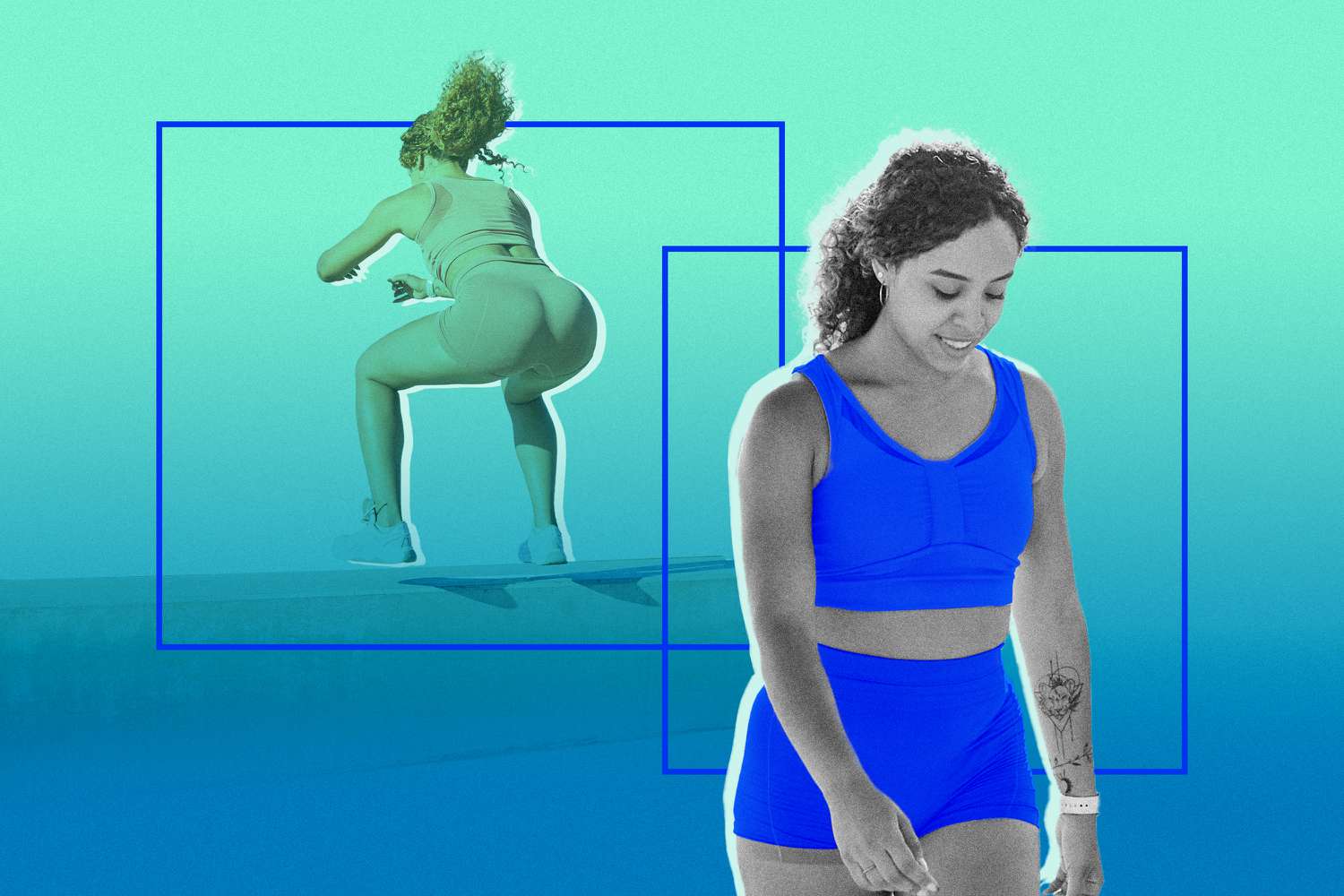5 Ragioni per cui gli amanti dell'HIIT stanno scegliendo esercizi a basso impatto.

Se hai sbirciato l'orario di una palestra o la tua app ClassPass di recente, è probabile che tu abbia visto una vasta gamma di opzioni di allenamento ad alta intensità (HIIT). Tutto, dal CrossFit e i plyometrics cardiovascolari, rientra in questa categoria, così come gli allenamenti sprint come Barry's Bootcamp e le routine a intervalli come SoulCycle, CycleBar e la maggior parte delle lezioni Peloton.
Ma gli esperti di fitness e i ricercatori concordano: non è necessario fare così tanto sforzo per ottenere grandi benefici per il benessere. Mentre le routine e le lezioni di HIIT sono ancora molto richieste, da poco si sta diffondendo la consapevolezza dei potenziali vantaggi che si possono ottenere anche dalle opzioni a impatto ridotto.
Continua a leggere per saperne di più su come lavorare in modo più intelligente anziché più duro e ottenere comunque notevoli benefici muscolari, per la salute mentale e per la longevità.
L'allenamento ad alta intensità a intervalli (HIIT) è una strategia di esercizio che utilizza periodi alternati di esercizio breve e intenso con periodi di recupero meno intensi, spiega Christopher Gagliardi, responsabile scientifico dei contenuti educativi di San Diego, in California, per l'American Council on Exercise (ACE). Questi allenamenti possono coinvolgere l'allenamento cardiovascolare, muscolare o entrambi.
I periodi di sforzo sono "progettati per far salire il battito cardiaco rapidamente per brevi raffiche che ti spingono davvero al massimo", aggiunge Katie Dunlop, personal trainer certificata, specialista in nutrizione sportiva e fondatrice di Love Sweat Fitness e dell'app MOVE, con sede a Laguna Beach, in California. Durante i periodi di "on" di circa 30 secondi, gli allenatori HIIT dovrebbero essere quasi senza fiato e sforzarsi all'80-90 percento dello sforzo massimo, aggiunge Dunlop. Saltare la corda, saltare su una scatola, sprint e burpees sono tutti esempi di tradizionali MVP dell'HIIT.
Tra ogni segmento di massimo sforzo, gli allenamenti HIIT includono brevi periodi di recupero con movimenti meno intensi per creare una routine a circuito con intervalli, afferma Carissa Fernandez, un'istruttrice master di Club Pilates con sede a Denver, in Colorado.
"Quando sai che sta per arrivare il riposo, puoi dare tutto te stesso, il che può essere più incoraggiante rispetto a un allenamento tradizionale lento e costante", aggiunge ShaNay Norvell, personal trainer certificata NSPA presso Fuel Fitness Studio ad Atlanta, in Georgia.
Se la tua agenda è piena, l'HIIT può essere una benedizione, aggiunge Gagliardi: "L'HIIT offre risultati uguali e migliori in meno tempo rispetto a molti altri programmi di allenamento. In altre parole, puoi ottenere gli stessi benefici dei programmi di allenamento tradizionali, ma in un periodo di tempo più breve. Questo risolve il problema della mancanza di tempo che molte persone citano come motivo per non fare regolarmente esercizio fisico".
Ci sono anche molti altri benefici comprovati dell'HIIT:
Altri benefici documentati includono:
L'allenamento a basso impatto consiste in qualsiasi attività fisica che esercita uno stress e una forza minima sulle articolazioni, afferma Michelle Parolini, NASM-CPT, responsabile dello sviluppo degli allenatori per Row House con sede a Pittsburgh, in Pennsylvania.
"La corsa su un tapis roulant, i burpees e gli squat saltati sono tutti tipi di allenamenti ad alto impatto che aggiungono stress alle articolazioni", dice Parolini. "Gli esercizi a basso impatto possono aumentare la longevità del programma di fitness perché sono più delicati per il corpo e di solito prevedono che almeno un piede sia sempre a contatto con il pavimento". (Anche le attività sedute sono a basso impatto).
Gagliardi afferma che a volte le persone confondono l'allenamento a basso impatto con l'allenamento continuo di intensità moderata (MICT) o lo stato stazionario a bassa intensità (LISS), che prevede un esercizio continuo a intensità moderata o bassa e sostenibile. Ma vale la pena notare che "basso impatto" non significa necessariamente "bassa intensità" e non tutti gli allenamenti HIIT sono ad alto impatto. L'amato remo di Parolini, ad esempio, è un ottimo esempio di un tipo di esercizio che può essere a basso impatto e ad alta intensità. Anche il ciclismo può essere simile. Entrambi ti permettono di dare il massimo e fare allenamenti in stile HIIT senza stressare le articolazioni.
È importante fare la distinzione tra attività a basso impatto e attività a minore intensità rispetto all'HIIT.
"L'allenamento a basso impatto è delicato sulle articolazioni, ma non sempre indica l'intensità dell'esercizio dal punto di vista di quanto è intenso il battito cardiaco", chiarisce. "Camminare è considerato un esercizio a basso impatto, ma può essere eseguito a diverse intensità in base alla velocità e all'inclinazione. Anche camminare ad alta intensità può migliorare la forma fisica. L'esercizio a basso impatto può portare agli stessi benefici per la salute e la forma fisica dell'HIIT, ma l'allenamento sarà più lungo e i benefici potrebbero richiedere più tempo per essere raggiunti".
Gli stessi risultati con meno stress? Sembra allettante.
Come abbiamo detto, un modo semplice per ricordare cosa includono gli allenamenti a basso impatto è tutto ciò che si può fare seduti o che si può eseguire con un piede sempre a contatto con il pavimento.
"Senza plyometrics o salti, gli allenamenti a basso impatto comportano meno stress sulle articolazioni ed sono più sicuri per coloro che potrebbero avere problemi a ginocchia, caviglie o articolazioni", dice Norvell.
Considering the fact that about 1 in 10 Americans currently have osteoarthritis or degeneration of joint cartilage between bones, low-impact workouts can offer some serious relief. (This is just one example of many conditions that can be exacerbated by high-impact exercise.) 'Low-impact workouts are less likely to cause overuse injuries or burnout,' says Parolini. Parolini used to swear by boot camp-style training; complete with 'endless box jumps, treadmill sprints, and burpees. My neck and knees always bothered me, and I thought that was par for the course.' That is until she was introduced to the rowing machine. Parolini shifted her HIIT workouts to a low-impact environment, and this pivot has allowed her to 'keep the intensity level up while decreasing pain, mitigating injury, improving overall body strength, increasing range of motion and core engagement, and giving me overall better health.' Especially if you do HIIT workouts out of feelings of obligation rather than joy, Fernandez says that these high-intensity and high-impact routines can spike levels of the stress hormone cortisol. Beyond adding to your current stress levels, over time, high cortisol can impact everything from mental health to heart disease risk to muscle and bone strength, the Cleveland Clinic confirms. And if a sweat sesh doesn't spark joy, it's going to be something you want to escape from rather than tune into. The mind-muscle connection is vital to help you get the most from your workouts physically. At the same time, the mind-body connection is one of the key reasons why exercise plays a crucial role in our mental health. If your mind is somewhere else besides your movements, you'll be at increased risk for injury and won't be able to get as much out of every minute. Low-impact workouts like yoga or Tai Chi focus on connecting each motion with mindfulness in a way that aligns all of the above—and often helps to lower overall stress levels rather than elevate them. We can't be the only ones who have woken up the morning after a tough Tabata plyometrics workout or a CrossFit WOD like Mary only to find that our muscles are begging for mercy—and an unplanned day off. Low-impact exercises are ideal for many individuals because between-session recovery may be shorter. 'By incorporating low-impact exercises into your routine, you can maintain consistent activity without placing excessive stress on your body, so you can stay active without as many setbacks,' explains Parolini. Plus, athletes recovering from injuries who still want high-intensity strength and cardio can opt for a low-impact version of a HIIT workout. (Find more on this below in 'How to Make the Switch'). Before losing 45 pounds and becoming a certified personal trainer, Dunlop admits that she tried 'every training style—most of which were HIIT or gym-based. I would go hard for a couple of weeks and get burnt out or be too sore to do anything for a few days and wasn't able to create a sustainable fitness routine.' When Dunlop started sprinkling in low-impact training days to her agenda, she felt 'much more balanced mentally and physically. My cortisol levels dropped and I felt improvements in my overall body composition. I also was able to stay consistent because I wasn't working at 100 percent all the time. Not to mention those training days gave me more time to work out with friends going for hikes or beach walks.' From beginners to older adults to those with mobility limitations, low-impact workouts offer a diverse array of options. 'Low-impact workouts are accessible to people of all fitness levels because they offer a gradual and manageable approach. As fitness levels grow, low-impact work is adaptable by intensity, duration, and range of motion to match current abilities,' says Parolini. Imagine starting with a slow and steady walk on the treadmill. After three months of consistent training, perhaps you're ready to add some incline. Then three months later, you might be ready to pepper in some higher-speed intervals (say, +1 MPH for 30 seconds every 10 minutes). Norvell, for one, found herself gravitating from HIIT training sessions to prepare for half-marathons to lower-impact alternatives now that she's in her 40s. 'My knees feel better, and I'm still able to do more intense training and gain benefits in terms of cardiovascular endurance and strength benefits, just without as much impact,' says Norvell. Everyone can benefit from exercise, says Gagliardi, but those benefits only accrue if it's something you can stick with. Even if you swear by HIIT some of the time, your body might appreciate some lower-impact sessions in the mix.
Whether this is a walk or mobility flow as part of your active rest or a high-intensity, low-impact bodyweight or dumbbell strength routine, this is a savvy strategy to strike a balance between intense workouts and adequate recovery periods. (ICYMI, here are three legit reasons why active recovery is so important, plus exactly how to incorporate some into your training schedule.)
'Finding the right amount and intensity of exercise needed to lead to the greatest adherence is crucial,' says Gagliardi.
Whether you do HIIT or MICT, you'll score the same benefits, says Gagliardi—it just will take a different amount of time to achieve the same results.
To put this into perspective, think about a hypothetical trip to Alaska (if you live in the contiguous 48 states). You could fly there from your nearest airport, or jet to Seattle to cruise your way up and take in the scenery along the way. If you're really feeling ambitious and love a road trip, you can fuel up and drive. There's no universal 'right' answer; it varies based on your goals.
'You have the same goal of getting to a destination, but have different options for getting there,' says Gagliardi, and the same holds true for fitness styles.
To help the ideal mix of fitness methods, including intensity and impact levels, Gagliardi often asks clients:
For some individuals, HIIT is the solution and works well for all training sessions. For others, MICT is the best option, advises Gagliardi. A combo of HIIT and MICT may be the best option, perhaps with some LIIS sprinkled in.
'Another option is reduced-exertion high-intensity interval training (REHIIT) which is an evolution of HIIT that shortens the duration and creates a workout that does not feel quite so tough,' says Gagliardi.
This would allow your HIIT routine to be a bit less taxing, and possibly, a bit more community-boosting since you'll actually be able to catch your breath enough to maintain somewhat of a conversation.
For most people, a blend is best to deliver results and to create a fitness plan that's possible to stick with, says Dunlop.
'Too much HIIT and you might get burnt out or overworking your body leading to injuries. Too much low-impact may just get boring, or you may not see the physical changes you're looking for as far as body composition goes,' continues Dunlop. 'I personally always incorporate at least two days of low-intensity workouts into my week to allow my body to recover from some of my more intense workouts.'
Here's what this might look like in practice:
From reduced risk for heart disease and type 2 diabetes to impressive calorie burn, HIIT workout benefits abound. Plus they're very time-efficient if your schedule is jam-packed. That said, you can score all of those benefits from lower-impact options if you invest a bit more time.
For some fitness fiends, it might feel like the only way to reach your goals is to push at 100 percent each and every session. 'That couldn't be further from the truth. Low-impact, HIIT workouts offer an environment for continued growth and complete fitness,' says Parolini.
Lower-impact workouts are scalable, sustainable, and a stellar option for those seeking to prevent or recover from injury. They're also excellent for building community (since you may actually sometimes have the capacity to chat!) and might be more enjoyable for some populations. 'Everyone can benefit from incorporating lower-impact movement into their training,' confirms Parolini.
The growing interest in lower-impact options among HIIT lovers signifies that we're thinking long-term. Rather than stressing over our maximum calorie burn in a minimum of minutes, incorporating some low-impact elements into your training schedule can support joint health, long-term physical activity sustainability, diverse fitness goals, stress relief, and inclusivity. Whether they're in tandem with or in place of the HIIT programs, fit folks who used to swear by HIIT can benefit from incorporating lower-impact exercises into a fitness routine.




